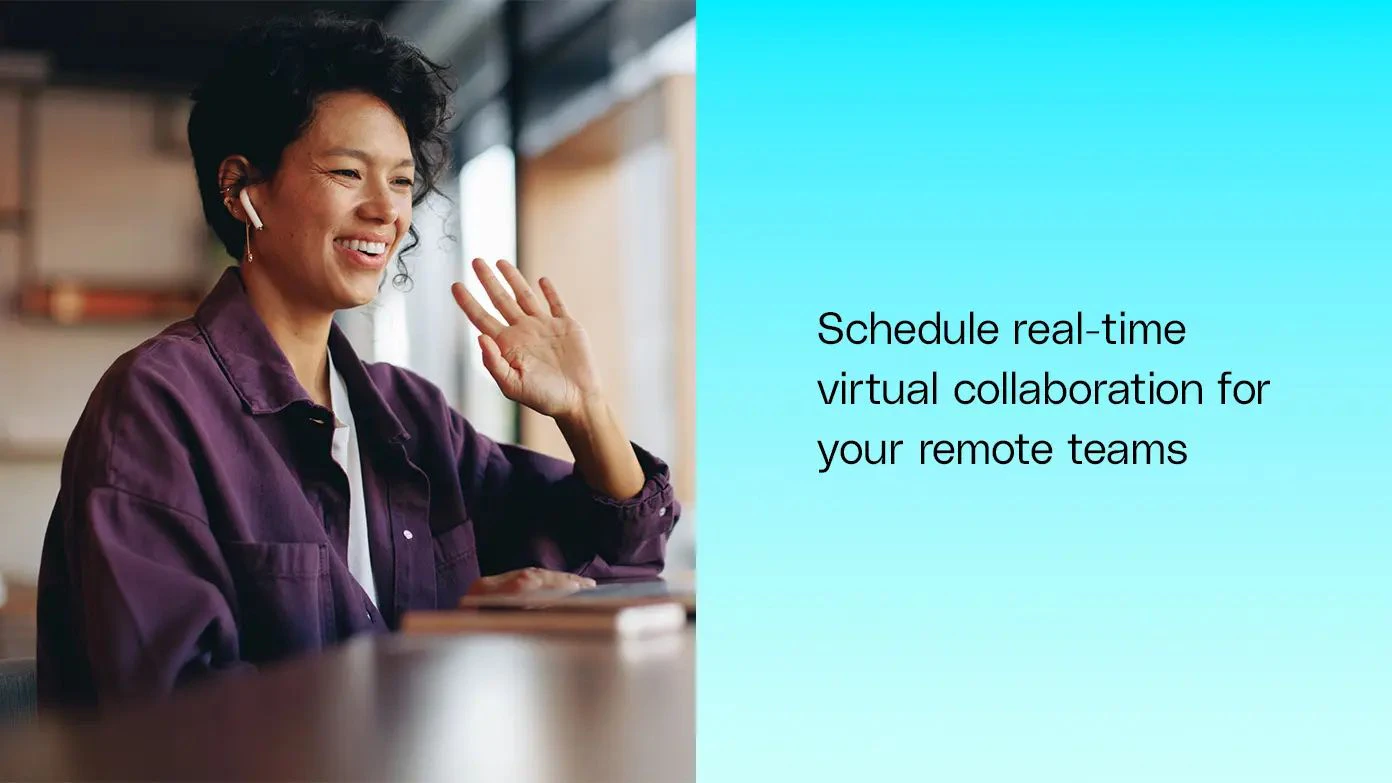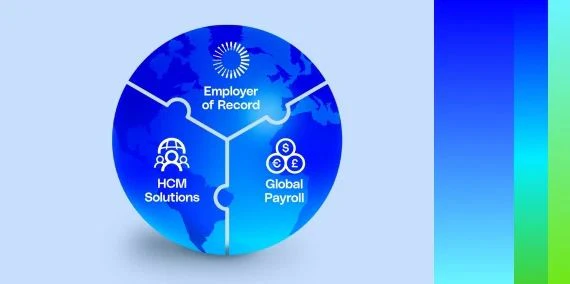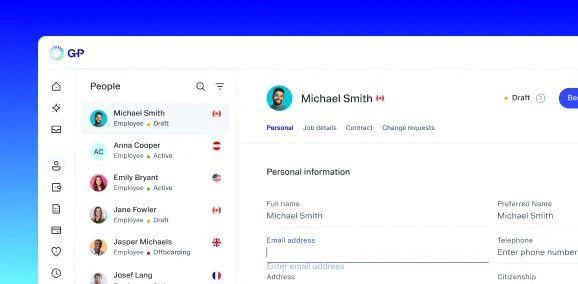Remote work lets teams collaborate across borders. But communication can be a huge challenge for remote workforces. With a best-in-class employer of record (EOR) in place — and a good communication strategy — you can deliver a connected experience for your global teams.
Let's explore key strategies to improve communication for remote workers today.
Why are communication strategies crucial for remote teams?
With many companies adopting hybrid working models and flexible arrangements, remote work is here to stay. This shift toward dispersed teams can make it difficult to build meaningful connections. According to Gallup, fully remote workers are more likely to feel lonely than hybrid or on-site employees. That's why effective team communication is essential to employee morale and business success.
Here are a few ways a strong communication strategy can boost performance for remote teams:
-
Improves sense of community: A solid communication foundation encourages collaboration, team building, and overall trust in your company.
-
Keeps employees engaged: Up to 85% of employees say they feel more motivated when regularly updated about company news and information. Open communication can make team members feel more comfortable sharing ideas and opinions.
-
Elevates performance: Employees who feel a sense of belonging at work are 4.4 times more likely to be mentally healthy, which is key to their overall well-being and productivity.
-
Promotes innovation: Workplace collaboration inspires new ideas that can improve quality of work. Clear communication mitigates any unnecessary back and forth and misunderstandings to keep projects on track.
-
Fosters cross-cultural connection: According to the 2025 Global Workforce Trends report, leaders say maintaining company culture across regions is a top challenge in building global teams. Strong communication across all global employees, including 1099 workers and remote team members, is key to creating a successful workforce.
15 remote work communication best practices for global teams
Around 14% of all U.S. employees work fully remote. And 75% of employees who can work from home do so some of the time. Globally, the World Economic Forum anticipates around 92 million fully remote jobs by 2030. As companies and employees move away from traditional office setups, it’s essential to adapt communication methods.
Let's explore 15 communications strategies for remote teams.
1. Build centralized communication channels
The first step in building a successful communication strategy is knowing which channels work best for dispersed employees. Tools that streamline written communication help team members respond promptly to messages and requests.
Platforms like Slack, Microsoft Teams, and Discord can be beneficial for communicating remotely. For example, employees who use Slack can instant message, share documents, and integrate their CRM and project management solutions to improve remote collaboration.
2. Set clear expectations and establish norms
Be open and set expectations to give remote employees a clear understanding of their roles, responsibilities, and employment terms. Our research found that 30% of employees hesitate to work for global companies because the tax and legal considerations are unclear to them. Clear communication addresses concerns, promotes accountability, and aligns efforts toward organizational goals.
Outline team goals, deadlines, and roles to ensure everyone is on the same page. While your collaboration plan may change depending on your team's needs, make sure to create an environment where everyone feels heard.
3. Conduct regular check-ins
Hold daily, weekly, or even bi-weekly team meetings to discuss progress, address any specific project roadblocks, and keep everyone informed.
Personalities vary in group settings. Some team members are more eager to talk, share the issues they're facing, and ask for support, whereas others are more reserved.
Empathy is key to making sure everyone is given the opportunity to express themselves. Schedule regular one-on-one meetings to make it easier for all personality types to open up.
4. Pay close attention to cross-cultural nuances
If you work across borders, chances are you have a culturally diverse team. An international team is an asset to any company. Be sure to acknowledge all of the cultural nuances of your workforce.
Training and experience in cross-cultural communication improve employee collaboration and performance. A well-rounded communication strategy helps prevent misunderstandings, ensures alignment on priorities and goals, promotes transparency, builds trust, and creates a more cohesive organizational culture.
Additionally, don't forget to consider how verbal communication may differ across regions. Some cultures are more direct and outspoken, while others are more reserved.
5. Take local norms and laws into account
When building global teams, pay close attention to local employment laws and norms. Global leaders say employment laws (47%) and tax regulations (47%) are top barriers to international hiring.
In many cases, your global teams have different mandatory holidays than your domestic teams. Research country-specific entitlements to stay compliant. If you're unsure where to start, G-P Gia™ can help. Get instant answers to your toughest compliance questions across 50 countries and 50 U.S. states. Our agentic AI can help you navigate local employment laws, mandated time off, and compliance, so you can focus on building a successful communication strategy.
6. Prioritize time for virtual collaboration
While asynchronous communication tools are great for cross-team collaboration, don't rely on them completely. 69% of remote workers report burnout from digital communication tools like messaging apps.
Schedule real-time virtual collaboration for your remote teams. Video conferencing tools build rapport and strengthen connections among team members. Video conferencing allows co-workers to see each other, read body language, and connect beyond a simple email.

7. Be mindful of time zones
Working across time zones while collaborating in real time can be a challenge for remote teams. Keep time differences in mind when scheduling meetings or sending messages.
How can managers build a collaborative team environment without scheduling daily meetings? Pay close attention to meeting cadence. Whenever possible, schedule meetings that don't require remote team members to work beyond their normal hours. Set a specific agenda for each meeting, including main priority points for all teams.
8. Evaluate your process regularly
Feedback is crucial for improvement. Schedule regular feedback sessions to discuss performance, provide and receive constructive criticism, and address any process issues.
Transparency helps team members understand their own strengths and your company's areas for improvement.
9. Encourage team-building experiences
Always encourage informal communication among team members alongside any work-related discussions. These informal touch points build relationships, boost morale, and foster a sense of camaraderie within your team. Spark these conversations by organizing team-building experiences, like virtual icebreakers, trivia games, or watercooler activities.
10. Document communication guidelines and update often
Create a living “how we communicate” playbook covering when to use which tools, response-time expectations, meeting norms, time zone etiquette, and how to handle communication issues. Assign an owner, add a change log, and review suggestions with team input. Store this document in your knowledge base for onboarding new hires.
Use Gia to draft locally compliant communication guideline documents for your global team.
11. Clarify each communication channel's purpose
A multichannel communication process only works when each channel has a clear purpose. For example, use direct messaging to solve urgent issues and email for general updates. Set response-time expectations for each channel, and archive channels you don't use. Use keywords and tags for communication routing so each team member only sees the messages they need.
12. Establish a communication charter or SOPs
Create a document with your standard operating procedures (SOPs) to outline:
-
Working hours
-
Overlap windows
-
Availability signals
-
Response-time expectations
-
Meeting cadence and agendas
-
Documentation standards
-
Escalation processes and timelines
Standardizing practices for distributed teams keeps communication efficient across channels and time zones.
13. Use visual communication methods
Try using visuals for complex ideas, including:
-
Diagrams
-
Process flows
-
Journey maps
-
Short walkthrough videos
-
Digital whiteboards for workshops
-
Presentation software for stakeholder narratives
Standardize templates for consistency and add alt text and captions for accessibility.
14. Encourage feedback and dialogue
Provide channels for routine feedback, like anonymous surveys and virtual open office hours. When you implement changes based on feedback, share them with your team to encourage future discussions and accountability.
15. Define workflows and shared terminology
Document your team's workflows, including who's responsible for each step and how long it should take. Create a shared glossary defining any technical terms or acronyms your team uses. Also, standardize how you name files, channels, and tickets so everyone can find them easily. This will cut down on mistakes and help new team members get up to speed quickly.
Remote team communication methods
Keep your remote team members connected with methods like:
-
Collaborative software: Project management and document-sharing tools let teams collaborate, track progress, and centralize resources.
-
Project management tools: These platforms help teams organize tasks, set deadlines, and monitor project milestones.
-
Instant messaging: Chat tools allow for quick, informal conversations and problem-solving.
-
Email: Email is essential for formal communication and documentation.
-
Video conferencing: Video calls help teams connect, discuss complex topics, and understand each other better through visual cues.
-
Audio calls: Voice calls are great for quick chats when video isn't needed.
-
Cloud-based file sharing: Cloud storage solutions let team members access, edit, and share documents from anywhere.
-
Recordings: Recording meetings and presentations lets absent team members catch up and provides a reference for future review.
Build your global team with G-P™
Consistent processes are the cornerstone of effective communication across global teams. Our AI-powered global employment products and EOR solutions help you build that foundation by issuing localized contracts, providing a smooth onboarding experience, managing payroll and benefits, and aligning compensation with local compliance requirements.
You can use Gia, our global HR agent, to draft and review locally compliant HR documents to optimize your communication strategy, such as:
-
Employment offer letters and contracts
-
Onboarding welcome letters
-
Termination letters
-
Disciplinary action notices
-
Policy announcements and updates
-
Employee handbooks
-
Internal memos
-
Promotion letters
-
Benefits enrollment or change notices
-
Health and safety communications
Gia isn’t just another HR tool or generic AI model – it delivers next-level agentic capabilities and deep insights backed by G-P proprietary data and verified sources that empower HR organizations to transform global HR and compliance and drive unparalleled business agility and productivity.
Nat Natarajan
Chief Operating Officer, G-P
Book a demo today to build and manage your global team quickly and compliantly.





















